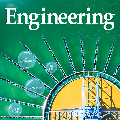CCF推荐 | 高引SCI期刊专刊信息5条
数据库管理与信息检索
Information Sciences
Special Issue on Advances in Industrial Artificial Intelligence (AIAI)
全文截稿: 2019-09-30
影响因子: 4.305
CCF分类: B类
中科院JCR分区:
• 大类 : 工程技术 - 2区
• 小类 : 计算机:信息系统 - 1区
网址: http://www.journals.elsevier.com/information-sciences/
In general,Industrial Artificial Intelligence(IAI)refers to the application of artificial intelligence to industrial automation. Different from general artificial intelligence, industrialAInarrows downthe scope ofAIresearch fields to building intelligent systems that resolve engineering problems with human-like intelligence. IndustrialAIstresses more applications rather thanAIconcept or framework development and highlights the value ofAIsolution to specific process industry, including causality identification between input-output variables, state or product quality estimate, retrieval and reasoning of interesting cases, motif discovery from the closed-loop system for monitoring, fault diagnosis and detection, soft-sensing, parameter, structure and process optimization, planning and coordination, dynamical system modelling and control.
IAIhas received sufficiently technical supports from sensing techniques, more powerful computing facilities and stronger communication infrastructure. However, one should be aware that these technologies mentioned above may create some business values only if the problems in industry can be well studied and formulated. Understanding the domain-based AI (DBAI) concept is important and meaningful toAIcommunity, and one cannot expect much ofAItechnologies without knowing the application background in depth, the data nature, and dynamics and constraints of the variables.IAI, as a member ofDBAIfamily, will play a key role in contributing to product and service innovation, process improvement, and insightful discovery, and will eventually become an unstoppable driver for the transformation of economy and business opportunities.
This special issue aims to highlightIAIconcept, research scopes and recently technical advancements in industrial data analytics, and make theIAIconcept more visible inAIcommunity. Original contributions, including industrial data driven machine learning techniques, advanced fuzzy logic systems, online optimization algorithms, real-world case studies on industrial applications, and comprehensive surveys with directions, are cordially welcome. Through this special issue, some fundamental concepts and associatedAItechniques forIAIwill be further focused and promoted.
About the issue
The topics of this special issue include, but are not limited to:
Identification of input-output causality from noisy big industrial data
Computational intelligence and machine learning techniques for soft-sensors and predictive modelling
Time-series forecasting, and interval estimate for industrial data
Learning-based reasoning techniques for industrial applications
AI-driven operational optimization and decision-making
AI-based methods for process monitoring, abnormality detection and fault analysis
AI-based planning and scheduling for process industries
Case studies of AI technology for problem solving in process industries, chemical engineering, power systems, industrial robotics, maritime engineering, transportation engineering, civil engineering, and intelligent software engineering
数据库管理与信息检索
Journal of Web Semantics
Special Issue on Language Technology and Knowledge Graphs
全文截稿: 2019-09-30
影响因子: 1.348
CCF分类: B类
中科院JCR分区:
• 大类 : 工程技术 - 4区
• 小类 : 计算机:人工智能 - 4区
• 小类 : 计算机:信息系统 - 4区
• 小类 : 计算机:软件工程 - 3区
网址: http://www.journals.elsevier.com/journal-of-web-semantics
Language understanding and knowledge engineering are among the most active research and development areas due to the proliferation of big data. This special issue on Language Technology and Knowledge Graphs is devoted to gather and present innovative research, systems and applications that address the challenges in the broad areas of language and knowledge intelligence, presenting a platform for researchers to share their recent observations and achievements in the field. Special topics for this special issue include but are not limited to:
1. Textual Entailment and Knowledge
Textual entailment
Fact checking
Fake news detection
Argumentation mining
2. Knowledge-Guided NLP
Question answering and reading comprehension
Dialogue systems
Information Retrieval
Multilinguality
Recommender systems
Machine Translation
Knowledge-Guided Deep Learning
Complex knowledge-driven Information Extraction tasks e.g., relation extraction, event extraction
Methods and metrics for evaluation of semantic annotations with respect to ontologies
Knowledge-driven entity disambiguation and resolution
3. Contextual Knowledge Graphs and Language Technology
Extracting and modelling temporally bounded information
Dealing with culturally-aware information
Handling domain specificity of information
4. Information Extraction for Knowledge Graphs
Extraction from unstructured versus semi-structured textual sources (e.g. tables)
Dealing with the imperfections of Information Extraction techniques in the Semantic Web setting and their impact
Multi-source or multilingual Information Extraction for ontology population
Information extraction subtasks (e.g., terminology extraction, relation extraction, coreference resolution) for the Semantic Web
Methods and metrics for evaluation of Information Extraction for the Semantic Web
5. Applications and Architectures
Knowledge-based Information Extraction for specific domains and applications, e.g. business analytics, healthcare and biomedicine, cultural heritage etc.
Information Extraction for social media mining
Scalability of tools and resources
Platforms and architectures for automatic and semi-automatic semantic annotation
Tools and methodologies for building and managing complex processing workflows
图形学与多媒体
Computer Aided Geometric Design
Special Issue on “Computational Geometric Design”
全文截稿: 2019-10-01
影响因子: 1.522
CCF分类: B类
中科院JCR分区:
• 大类 : 工程技术 - 4区
• 小类 : 计算机:软件工程 - 3区
• 小类 : 应用数学 - 3区
网址: http://www.journals.elsevier.com/computer-aided-geometric-design
In computational geometric design numerical and mathematical methods are applied to problems having a significant geometric component. Exemplary topics include curve and surface design, geometric algorithms, reverse engineering, solid modeling, computer vision, graphics, robotics, and scientific visualization.
Applications of these approaches continues to grow in both academia and industry and can now be found in a wide range ofdisciplines such as engineering, physics, chemistry, medicine,geosciences, biology, architecture, and art.
This special issue is dedicated to recent developments in computational geometric design. Novel contributions containing new theoretical insights, method development, or application are desired. The list of suggested topics includes, but is not limited to:
• 3D fabrication and manufacturing technologies
• 3D printing
• Algebraic, differential, and discrete geometry
• Computational geometry and topology
• Computer aided geometric design
• Curves and surfaces
• Geometric design in science, engineering, and new materials
• Geometric deep learning
• Isogeometric analysis
• Mesh generation
• Numerical analysis of geometric algorithms
• Reverse engineering and reconstruction of shapes
• Robotics and automation
• Shape analysis, modelling, and optimization
• Topological modelling
• User interfaces for geometric modelling
计算机体系结构,并行与分布式计算
Future Generation Computer Systems
Special Issue on “Information-Centric Network enabler Communication for Internet of Things”
全文截稿: 2019-10-01
影响因子: 4.639
CCF分类: C类
中科院JCR分区:
• 大类 : 工程技术 - 2区
• 小类 : 计算机:理论方法 - 2区
网址: http://www.journals.elsevier.com/future-generation-computer-systems/
Information-Centric Networking (ICN) has been proposed as an alternative paradigm for future Internet and promising to replace the current host-centric model. The communication in ICN is mainly based on the content name instead of using host addresses. Hence, the content is decoupled from its original location and may be cached in the network infrastructure. Also, the use of content-based security makes ICN a strong candidate for the future Internet, to fulfill user requirements, improve the content distribution, and the overall network performance. Under the concept of ICN, various architectures have been implemented such as Content-Centric Networking (CCN) and Named Data Networking (NDN). On the other hand, the Internet of Things (IoT) technology is being widely applied to diverse domain-applications including smart cities, smart homes, smart healthcare, smart grids, and smart transportation. Things in the IoT ecosystem can collect data, interconnect between each other and the Internet, processing and taking decisions without human interaction. IoT communications and applications are, in nature, information-based and follow content-oriented paradigm. Hence, ICN may show promising performance on IoT, and help to overcome different IoT challenges and application requirement including addressing, heterogeneity, mobility, security, and scalability.
Potential topics include but not limited to the following:
Advances architecture and application design for ICN-IoT.
Standardized and unified content naming schemes.
Energy and resource efficiency forwarding scheme.
Distributed in-network caching placement strategies.
Efficient cache replacement policies.
Forwarding/caching in resource-constrained IoT devices.
Secure pub-sub communication among IoT applications.
Novel QoS provisioning for CCN/NDN architecture.
Privacy, security, and trust for IoT applications.
Resource constraints access control policies for IoT.
Enable ICN communication for 5G-IoT networks.
Lightweight cryptography algorithms for ICN-IoT networks.
Experimental prototypes and test-bed for CCN/NDN in IoT.
Analysis and evaluation of running CCN/NDN in large scale IoT networks.
Business models of applying ICN in real IoT environment.
计算机科学与技术
Robotics and Autonomous Systems
Special Issue on Skill Transfer Learning for Autonomous Robots and Human-Robot Cooperation
全文截稿: 2019-10-01
影响因子: 2.638
CCF分类: 无
中科院JCR分区:
• 大类 : 工程技术 - 3区
• 小类 : 自动化与控制系统 - 3区
• 小类 : 计算机:人工智能 - 3区
• 小类 : 机器人学 - 3区
网址: https://www.journals.elsevier.com/robotics-and-autonomous-systems
Human and many animals usually preserve the skill knowledge learned in the past and utilize it to help future learning and problem solving. Without the ability to summarize and update skill knowledge, a robot typically needs large amounts of training samples, which may be inaccessible in rapidly-changing environments. Therefore, the skill transfer learning, which mimics the human learning process and capability, becomes an important component for autonomous robots. In addition, robots should persistently learn skill from the human demonstrations. Different from conventional machine learning, skill transfer learning focuses continuous learning process in changing conditions. Although skill transfer learning has attracted attentions from diversified communities, its cognitive mechanism and applications in autonomous robots have not been fully exploited, and many challenging problems remain unsolved.
This special issue mainly focuses on skill transfer learning for autonomous robots and human-robot cooperation, addressing both original algorithmic development and new applications of cognitive autonomous learning. We are soliciting original contributions, of leading researchers and practitioners from academia as well as industry, which address a wide range of theoretical and application issues in skill transfer learning. Topics for this special issue include, but are not limited to:
List of topics
· Theoretical foundations of skill transfer learning
· Cognitive mechanism of skill transfer learning
· Online and incremental skill learning for long-term autonomy
· Multi-modal skill acquisition and representation
· Cross-modal skill transfer
· Human-robot cooperation for skill learning
· Skill learning from human demonstrations
· Benchmark for skill transfer learning
· Evaluation criteria for skill transfer learning
· Real-world applications of skill transfer learning
广告
登录查看更多
相关内容
A Survey of Reinforcement Learning Techniques: Strategies, Recent Development, and Future Directions
Arxiv
80+阅读 · 2020年1月19日





